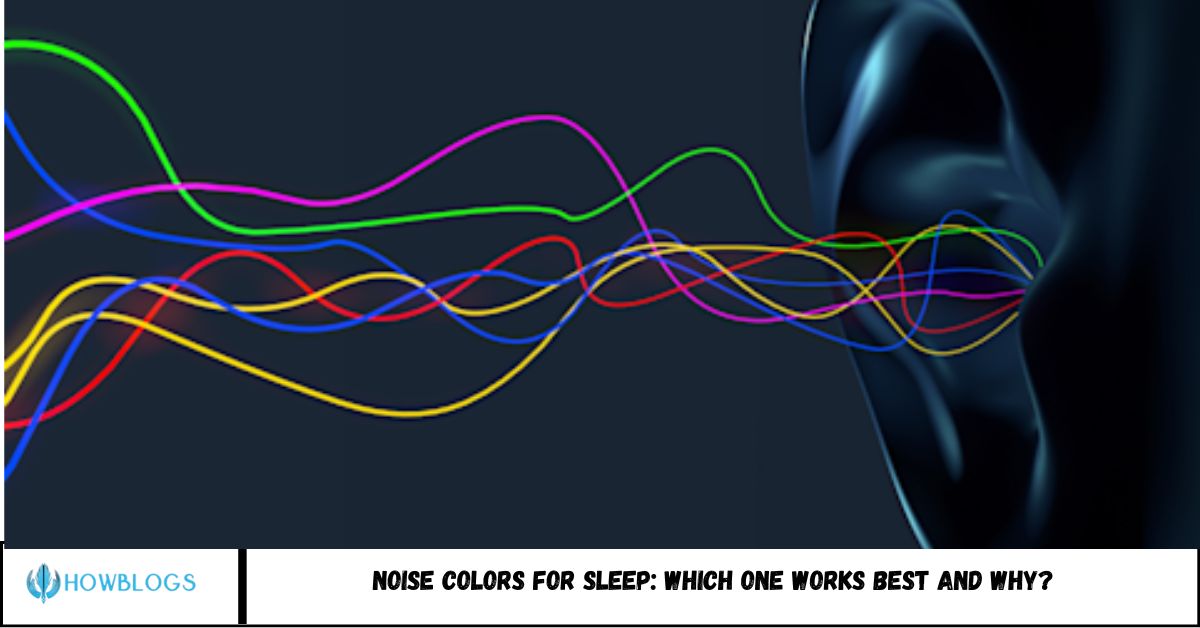Table of Contents
Noise Colors: Which One Is Best for Sleep?
Can the color of sound really help you sleep better?
For millions struggling with insomnia, racing thoughts, or environmental noise, the right type of background sound—known as “colored noise”—can make the difference between tossing and turning or falling into deep, restorative sleep.
From white noise to pink and brown, these sound profiles are more than just static — they’re backed by science and sleep studies. But which one is most effective? And why do different noise colors affect the brain in different ways?
In this article, we’ll break down the science behind noise colors, their specific effects on sleep, and how to choose the right one for your sleep needs
Noise colors—like white, pink, and brown noise—are sound frequencies that influence brain activity and sleep patterns. While white noise is commonly used, pink and brown noise may be more effective for deep sleep and memory consolidation. Understanding their differences helps optimize sleep quality, especially for light sleepers or those with disrupted rest.
If you’re one of the millions lying awake night after night, you’re not alone — and the solution may not be a new mattress, but the right kind of sound.
Whether it’s white noise, pink noise, or brown noise, these audio frequencies—collectively known as noise colors—have become popular tools for improving sleep quality, reducing nighttime disruptions, and even aiding with conditions like tinnitus and ADHD.
In fact, a 2022 Gallup survey conducted with Casper Sleep found that roughly one-third of U.S. adults rated their sleep as fair or poor. That’s about 85 million Americans struggling to get the rest they need, based on U.S. Census data.
Sound machines and noise apps promising better sleep have flooded the market, but are they backed by real science? And which noise color is best suited to your unique sleep needs?
In this article, we’ll break down the science of noise colors, explore their distinct benefits, and help you determine whether white, pink, or brown noise is the right choice to improve your sleep quality.
What Are Noise Colors?
Noise colors refer to the way sound energy is distributed across frequencies:
- White noise: Equal energy across all frequencies. It sounds like static or a whirring fan.
- Pink noise: More energy in lower frequencies, making it deeper and softer. Similar to rain or rustling leaves.
- Brown noise (or Brownian noise): Even more emphasis on lower frequencies. Think of deep ocean waves or distant thunder.
How Each Noise Color Affects Sleep
White Noise: Best for Masking Distractions
- Creates a consistent sound environment
- Helps mask external noise like traffic or voices
- Ideal for people in noisy environments
Research Insight: A 2017 study in Frontiers in Human Neuroscience found white noise improved sleep onset in people in high-noise hospital settings.
Pink Noise: Best for Deep, Restorative Sleep
- Mimics natural sounds like rain or wind
- Has been shown to enhance deep sleep and memory consolidation
- Less harsh than white noise, making it easier on the ears
Scientific Backing: A 2013 study published in Neuron showed pink noise increased slow-wave sleep and improved memory recall in older adults.
Brown Noise: Best for Anxiety and Relaxation
- Deeper and more bass-heavy than pink or white noise
- Soothes the nervous system and may reduce anxiety
- Great for people who find white noise too sharp
Fun Fact: Despite its benefits, brown noise is less researched but is gaining popularity in ASMR and relaxation communities.
Choosing the Best Noise for Your Sleep Style
| Sleep Concern | Best Noise Color |
|---|---|
| Noisy environment | White noise |
| Trouble staying asleep | Pink noise |
| Anxiety or overthinking | Brown noise |
| Sensitive to high-pitched sounds | Brown or pink noise |
Where to Find Quality Noise Color Tracks
- Apps: Calm, Headspace, myNoise, and Noisli offer customizable noise color tracks.
- YouTube: Search for “10-hour brown noise” or “pink noise for sleep.”
- Smart devices: Many white noise machines now include multiple sound color options.
FAQs
1. What’s the most popular noise color for sleep?
White noise is the most widely used due to its accessibility and versatility, but pink noise is gaining favor for promoting deeper sleep.
2. Can I use colored noise all night long?
Yes, it’s generally safe. Many people leave it on through the night to block sudden noise changes.
3. Is brown noise good for kids or babies?
Yes, especially for soothing fussy infants, but keep the volume low and consistent.
4. Do noise colors help with tinnitus?
Yes. White and pink noise are commonly used to mask tinnitus and provide relief.
5. Can noise colors replace sleep medications?
While not a replacement, they can be a helpful natural aid in managing sleep issues.
6. How loud should the noise be?
Aim for a volume level of around 50 decibels—soft enough to soothe, loud enough to mask distractions.
Conclusion
When it comes to sleep, one sound doesn’t fit all. If you’re in a loud environment, white noise can help. If you want deeper sleep and better memory, pink noise may be your best option. For relaxation or anxiety, brown noise might be your go-to.
Experiment with different noise colors to find the perfect fit for your brain’s rhythm—and turn your sleepless nights into sound slumber.

